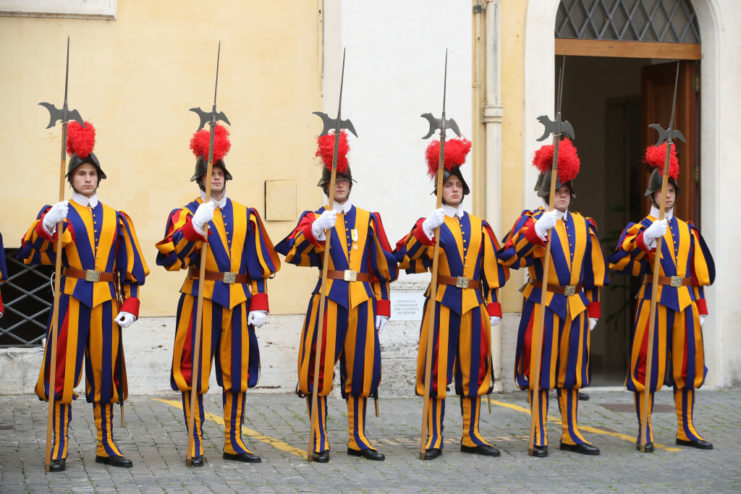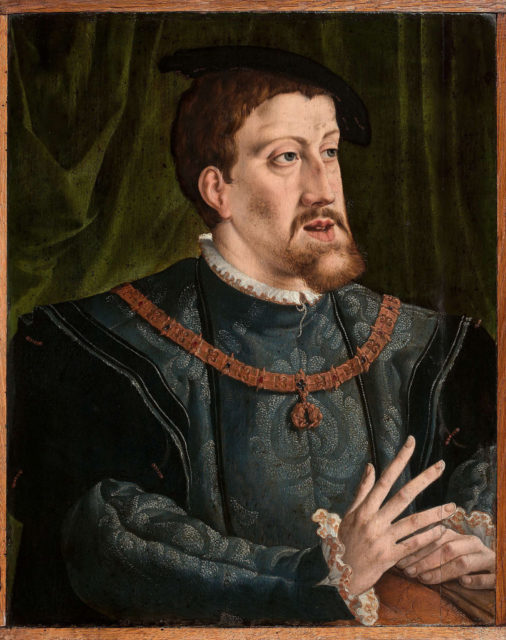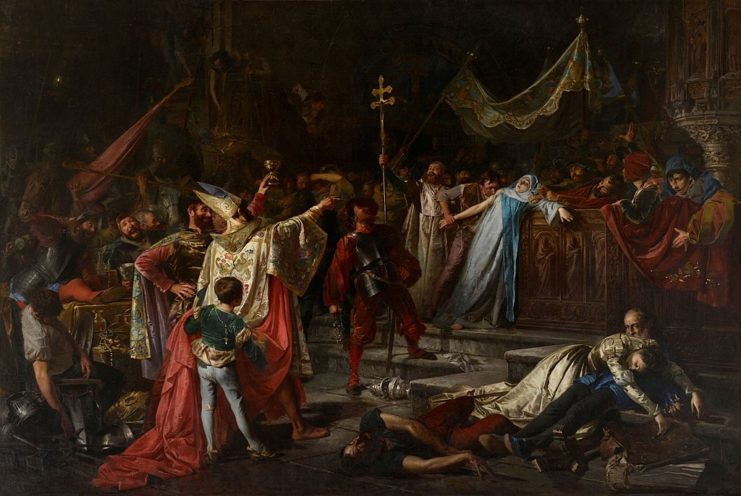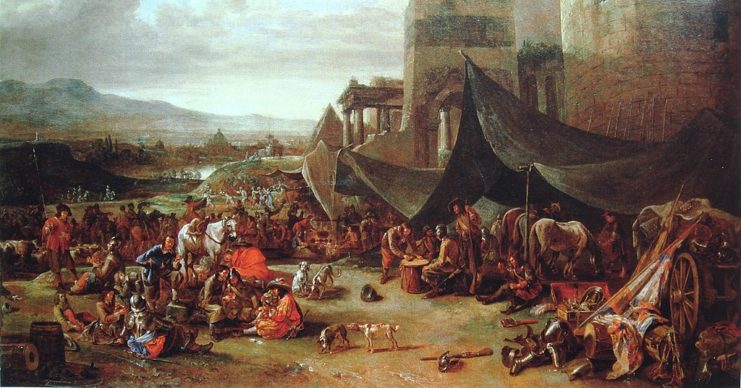History is full of stories about outnumbered armies making brave stands against scores of foes. While the Swiss Guard often look ceremonial with their halberds and puffy pants, they are quite skilled. They proved this in 1527, when a rogue army attempted to invade Rome, leading to an event dubbed “The Last Stand of the Swiss Guard.”
The Swiss Guard was established in 1506
The Swiss Guard is the oldest continuing standing army in the world. Switzerland and the Vatican long had a relationship where the Swiss would send mercenary soldiers to protect the Holy See. In 1506, this union was made official. The first group of Swiss troops sent to protect the Pope and the Papal capital numbered 150.
That number is similar today, with 135 Swiss Guardsmen serving at any given time.

There are some requirements for those hoping to serve with the modern Swiss Guard. Applicants must come from Switzerland and be between 18 and 30 years of age. They must also be Catholic and unmarried, and are required to complete basic training with the Swiss Armed Forces.
Charles V stiffs his soldiers
Throughout the 1520s, Holy Roman Emperor Charles V was in constant conflict with the French. To give him an edge, Charles imported mercenary troops to aid him in battle. This included non-Catholic soldiers from both Germany and Spain. Pope Clement VII was alarmed by Charles’ growing power and his attempts to dominate the Catholic Church. To try to stop his rise, the Pope allied with French King Francis I. This alliance came to be known as the League of Cognac.

Charles V and his troops were able to defeat the League of Cognac in battle. However, the Holy Roman Emperor didn’t have the funds to pay his troops, so the enraged mercenary soldiers looked elsewhere for remuneration.
Why Rome was a target
While Charles V was Catholic, that didn’t mean all of the soldiers in his army were. There were 14,000 Landsknechts from Germany and many of them were of the Lutheran faith. There were also 6,000 mercenary soldiers from Spain. Rome made an intriguing target due to the riches available in the city. Not only did it have money, but priceless artifacts as well.

Religion also played a part in the decision to attack Rome. Many of the Landsknecht were Protestant and felt an attack on the Papal city was an extension of their movement. Martin Luther, who was alive at the time, was against the act. Following the Sack of Rome, he said, “Christ reigns in such a way that the Emperor who persecutes Luther for the Pope is forced to destroy the Pope for Luther.”
The Sack of Rome and the performance of the Swiss Guard
The mercenary soldiers began their attack in May 1527, and the odds were certainly in their favor. A total of 20,000 Germans and Spaniards were joined by a number of Italian soldiers, while Rome was defended by a militia force of 5,000 and 189 Swiss Guard. Of the Swiss Guardsmen, 42 split off protect Pope Clement VII.

While their numbers were great, the mercenary soldiers got much more of a battle than they expected. In the end, all of the militia soldiers and Swiss Guardsmen were killed. They fought bitterly and courageously, however, and managed to kill or injure thousands of mercenaries. There are claims the amount of casualties on the opposition’s side amounted to 15,000, but these numbers have not been verified and are likely exaggerated.
The event has since been memorialized as “The Last Stand of the Swiss Guard.”
The Sack of Rome had a significant impact on the city
The attack essentially ended what was known as the High Renaissance period of Rome. Pillaging occurred for months, and by the end the city’s population had dropped to around 10,000. Among those who left were prominent artists and their wealthy patrons. Clement VII was forced to pay a ransom of 400,000 Ducati to remain alive. Following the sack, he ceded more and more power to Charles V, causing the Catholic Church’s power to erode.

New! Want to become a trivia master? Sign up for our War History Fact of the Day newsletter!
The Sack of Rome also widened the split between Catholics and Lutherans. This divide became permanent, and Protestantism grew in popularity throughout Europe.
